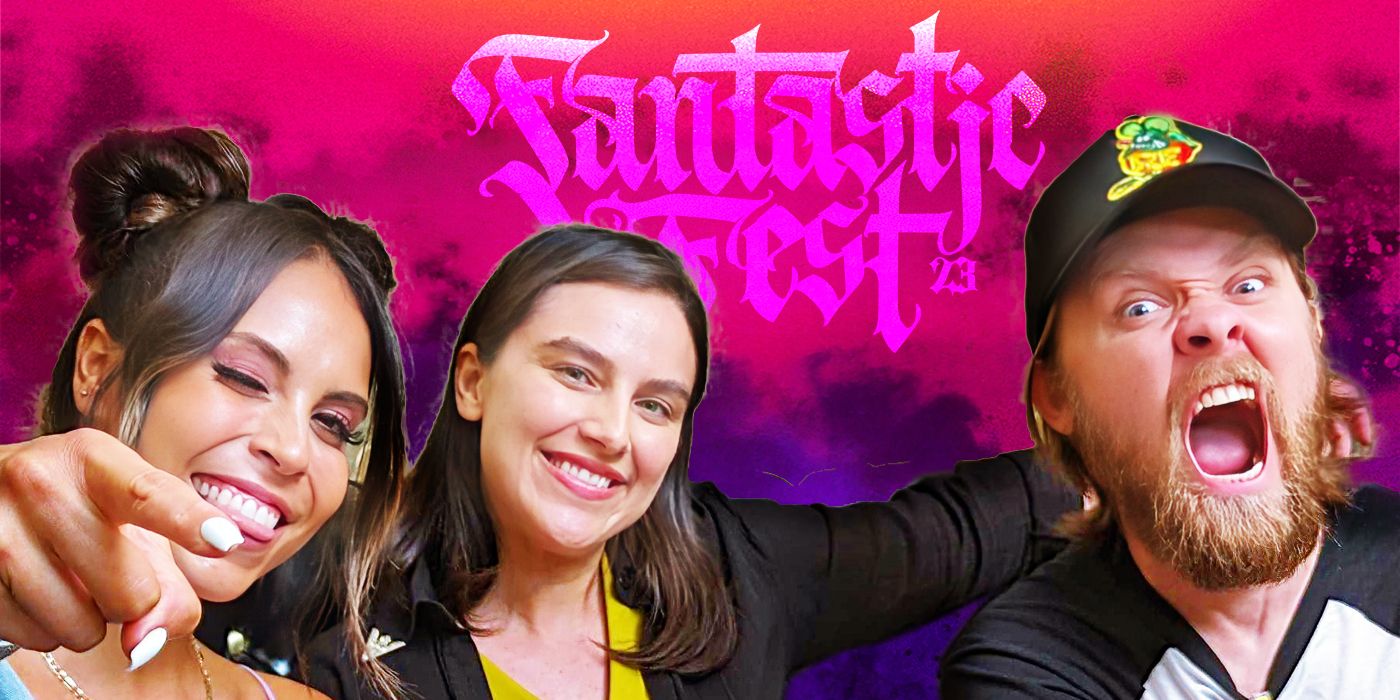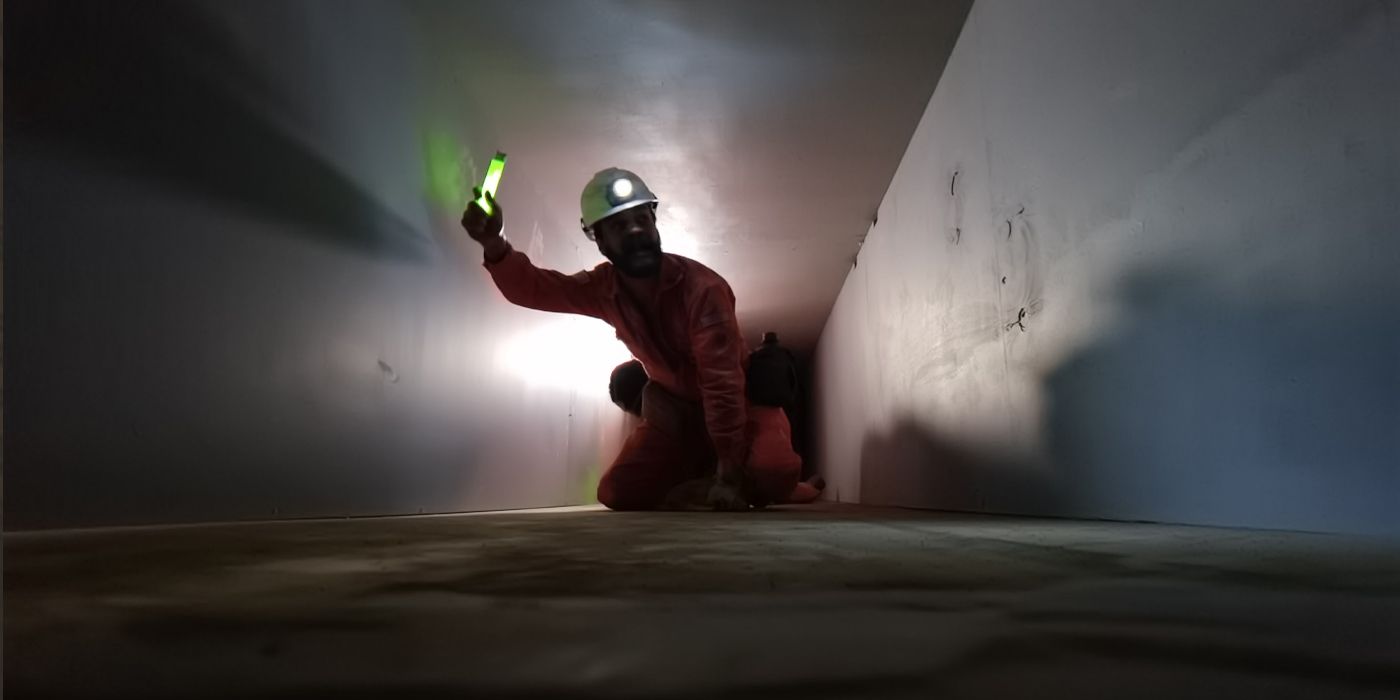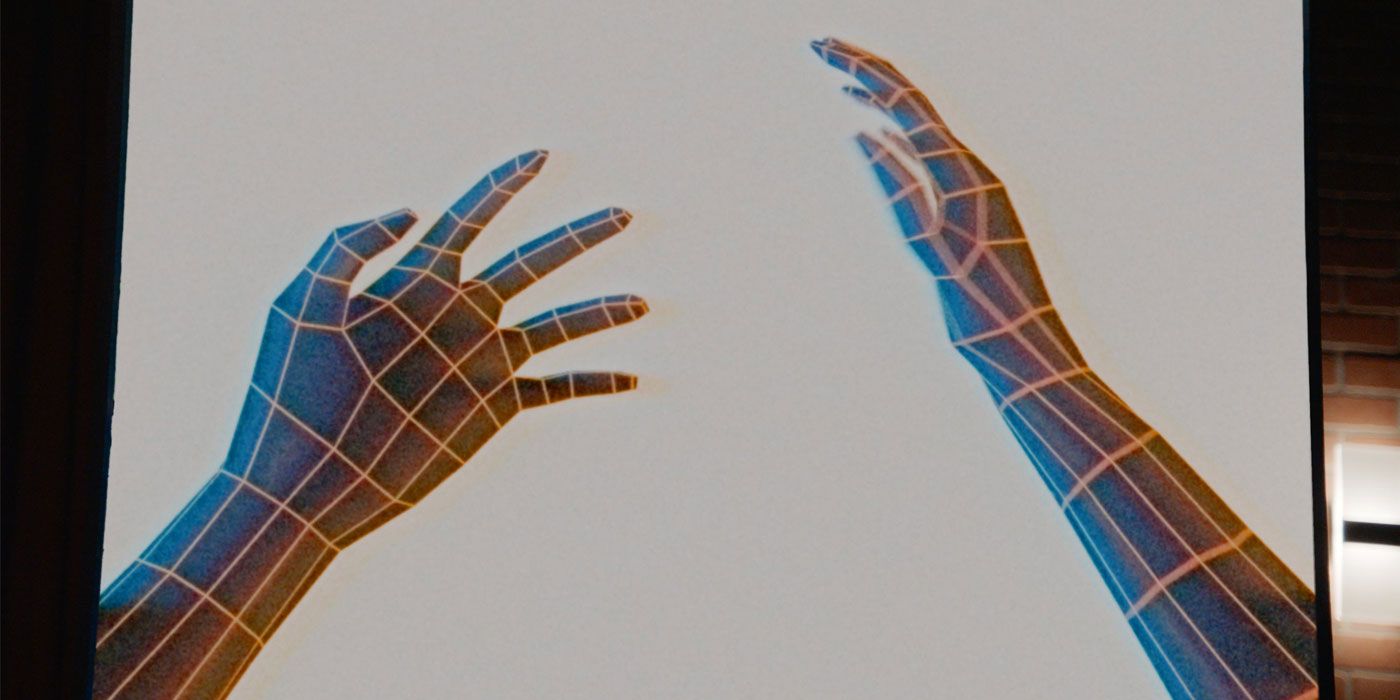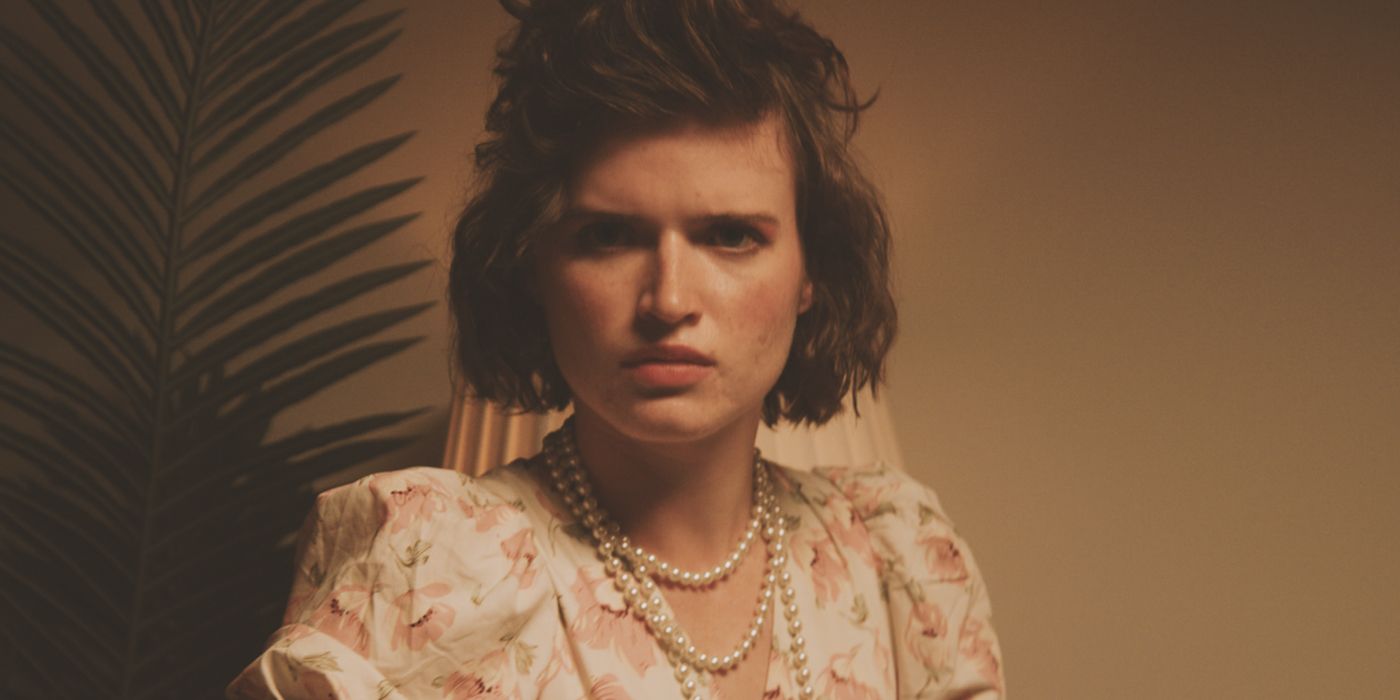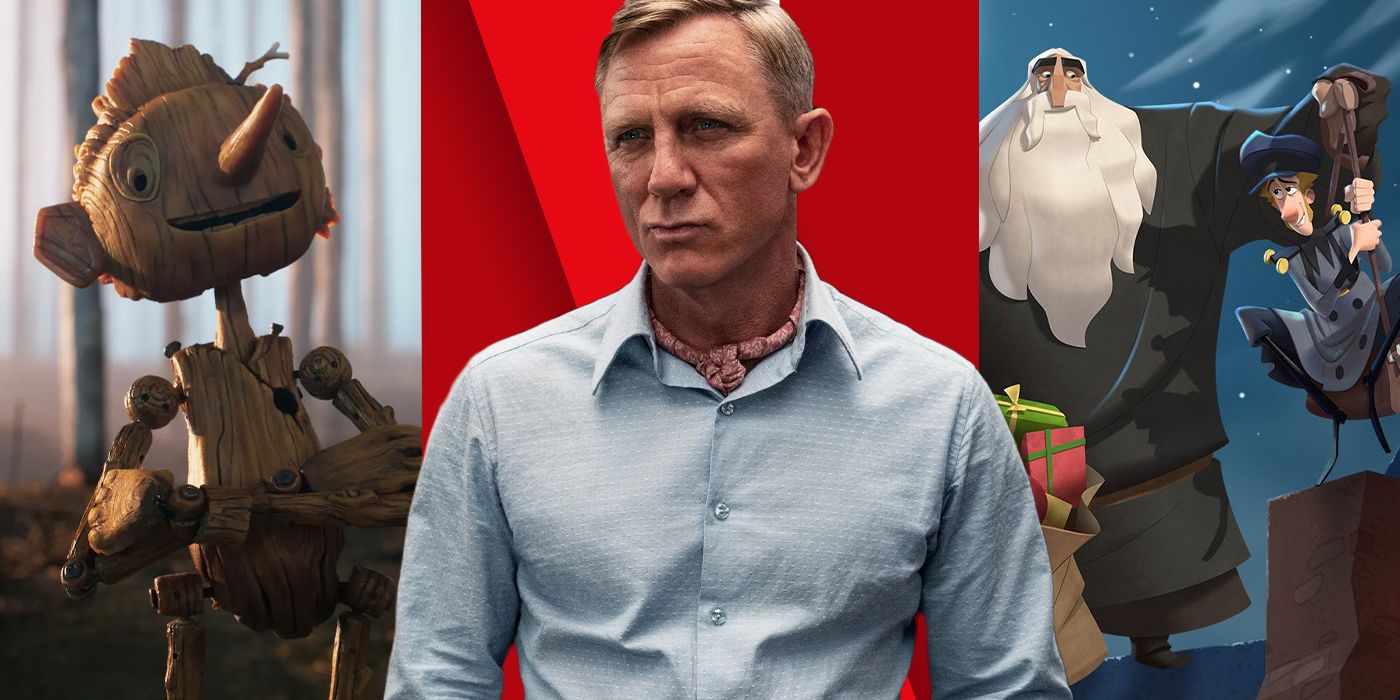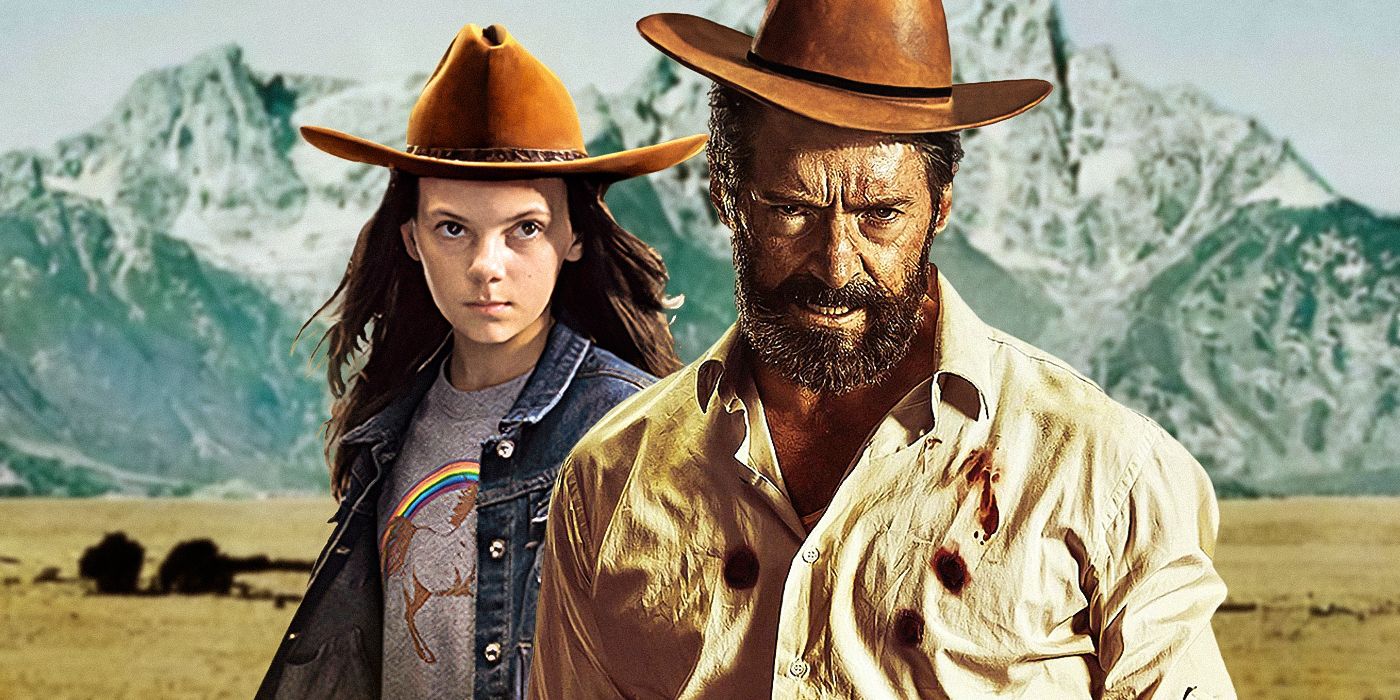The Big Picture
- Gigi Saul Guerrero, Mike P. Nelson, and Natasha Kermani talk about joining the ‘V/H/S’ family with ‘V/H/S/85.’
- While at Fantastic Fest for the film’s world premiere, the trio discussed the joy of making a “f*** you movie,” a term coined by director-producer David Bruckner.
- Guerrero, Nelson, and Kermani also take us behind the scenes of their individual segments — “God of Death,” “No Wake/Ambrosia,” and “TKNOGD,” respectively.
Looking for a place to watch films where directors get punk rock with found footage, drench sets in buckets of blood, and swing for the fences in every respect? Look no further than the V/H/S films. It began as a low-budget found footage horror anthology film featuring some of the most exciting voices on the rise in the genre back in 2012, and that’s exactly what it still is today. The only difference is that now it’s a six-film franchise with a rabid fan base eagerly awaiting each new installment.
The newest V/H/S movie, V/H/S/85, sees the return of David Bruckner as a director and welcomes The Black Phone director Scott Derrickson as well as three need-to-know talents on the rise in horror filmmaking — Gigi Saul Guerrero, Mike P. Nelson, and Natasha Kermani. Guerrero directs “God of Death,” a piece that takes place during the devastating 1985 earthquake in Mexico City. Kermani’s “TKNOGD” sees a performance artist tackle new technology and tap into something sinister in the process. And then there’s the one-two punch from Nelson, “No Wake / Ambrosia,” two connected stories, a vacation massacre and a very unexpected aftermath I won’t dare spoil.
While in Austin for V/H/S/85’s world premiere screening at Fantastic Fest 2023, Guerrero, Nelson, and Kermani all visited the Collider interview studio for a chat. In addition to offering up behind-the-scenes details on their own pieces, each also sings the praises of the V/H/S/85 producers, a team that pitched the film as a “fuck you movie,” a quality Kermani dubbed “liberating and joyous.”
Check out my full chat with the V/H/S/85 directing trio in the video at the top of this article or in the transcript below. V/H/S/85 is now available to stream on Shudder.
PERRI NEMIROFF: I have a question for all three of you to start because one of my favorite things about the V/H/S movies is it feels like the producers get a bunch of filmmakers with unique voices together and then support them to the max. Can you tell me something about the producing team behind this movie that helped you deliver your best work?
MIKE P. NELSON: I’ll just start at the beginning. Getting that call was awesome. I think we can all kind of share in that a little bit. We all love V/H/S. David [Bruckner] always calls it, “These movies are punk rock, man.” So V/H/S was the punk rock found footage thing, and you can tell by watching all of them that every single filmmaker is having a blast because they just let them loose. So to be a part of that was kind of like a dream, like, “Oh man, that’d be so cool someday. I can do shorts. I can do some gnarly shit. This would be fun. I have ideas!” And then I met Josh Goldbloom at Cinepocalypse. I premiered a film there called The Domestics, and stayed in touch with him for a little bit but then didn’t hear from him over COVID, and then suddenly, “What’s up, bro? You wanna get on a call?” And I was like, “Oh my god, please. This could be good. No, no, no. No way. He’s just calling to see how things are going. Josh is a nice guy.” “So, man, I’m looking for directors for V/H/S.” I’m like, “Shut up!”
It was just one of those things where you’re just like, “Oh my god.” Being able to pitch the team and them being excited about hearing that pitch and then being like, “Okay, I’m doing this.” And then, again, to then be given, “Go. Let us know what you need to support you, and we will do the best we can, and make cool stuff.” I mean, come on, as filmmakers, that’s what we live for is for that sort of creativity. And so yeah, incredible. And I mean, being teamed up with these amazing people, being beside these filmmakers is kind of like, “What is happening right now?”
NATASHA KERMANI: I was brought in by Dave Bruckner initially. It was a very casual conversation. For the context, he basically said, “Just think of it as a ‘fuck you’ movie,” and that really resonated with me and spoke to me. [Laughs] First of all, what we do as directors is very solitary. I come from crew and I think I really miss that group project feel. I used to be in camera department and you kind of have your team of people and all that kind of stuff, but there’s one director usually. So I think being able to work with these incredible people, peripherally, but still, it felt like we were like, “Okay, we’re kind of doing a thing together. That’s kind of cool.” I didn’t even meet Mike until you were in your mix, but I knew what you were doing. We heard about each other. We were like, “Oh, Scott [Derrickson] is doing this …”
NELSON: There was a mysticism behind it. “I wonder what they’re up to.”
GIGI SAUL GUERRERO: They’re a real person!
KERMANI: [Laughs] Real humans! But also, I think it coming together in that really beautiful, organic way as a group was really fun. So that was really special. And then I would also say we work within extremely strict – Gigi and I talk about this a lot – just kind of working within the confines of the industry, which purports to be a creative industry, but in fact, you’re kind of creating a product, right? And we are sort of birthing from product to creativity, back to product, and I think to have something that is a ‘fuck you’ movie was so liberating and joyous, even though I was very scared of the found footage of it all in the beginning. It’s a simple thing to say, but to actually be able to experience it is truly, truly, truly a gift, so I’m very grateful to be a part of it.
GUERRERO: I kidnapped everyone to let me be part of it. No, I’m kidding. No, I’m not. No, I ate them for breakfast. [Laughs]
That’s a great idea for a wraparound segment for the next V/H/S movie.
GUERRERO: My experience was a little different, but just to add to theirs as well, I think all of us can say that we grew up watching five of these. This is the sixth one of V/H/S, and getting the opportunity to be part of the cool kids club is, for all of us, that hardcore, “Whoa, I made it! I’m here.” So, for me, it was something I just always wanted, maybe not to be part of the anthology, but since V/H/S 2, watching it in film school, I was like, “One day, I wanna be just friends with these guys. I wanna be part of that.”
So my experience, I didn’t get an invite or a call. I just crashed their set on 99. I legit just showed up. I gotta give it to [C. Robert] Cargill who wrote with Scott “Dreamkill,” he called me knowing I was in LA and said, “You’re in LA, right?” I was like, “Yes. Also, why are you calling me? This is cool.” And he let me know, “So you know, we shot our V/H/S. Yes, there’s a new one coming out, and I’m here to tell you there’s space for one more and it has to be you.” And that meant the world to me that he said that to me, and he told me, like a true jefe that he is, how to make that happen. He said, “Go to Burbank, meet Josh Goldbloom, the producer. Just show up. They’re shooting the one now, and just go tell him that it has to be you.” I went straight to their set and knocked on the door like how indie filmmakers do it.
NELSON: Yeah, that’s punk rock. That’s legit punk rock.
GUERRERO: It’s totally how you do it. I showed up, Josh was like, “Sure, come to the set. What do you got?” I’m like, “I don’t know, what do you got? Huh? What date do you got?” And as soon as he told me 85, I said, “I’ll come back tomorrow,” and I showed up the next day with an idea. So it was super cool.
Was that the idea we now see in the final film?
GUERRERO: Correct. Totally. As soon as he said 85, I left the set, gave him a big hug, and said, “Thank you,” and I immediately called my best friend Raynor [Shima], who’s produced everything I’ve done. I’m like, “85. It has to be Mexican, yo. What do we do?” He’s the one that actually said to me, “Well, the earthquake in Mexico City,” and I remember having that gasp reaction because I know what it’s like. My whole family lived it. It’s the biggest fear in the city. I was like, “That’s a no-brainer …” but we’re gonna put that Gigi twist at the end, you know what I’m saying? So it just was a no-brainer.
This is something I’m always curious about with found footage movies. I’ll throw it your way, Gigi, because it feels like you have more movement than anyone else does in their short. When you’re designing your shots, what is the key to making sure it does have an authentic found footage feel where it does feel like someone’s holding the camera and running, but while ensuring that the audience doesn’t get dizzy and still has a sense of geography?
GUERRERO: Man, that’s a question we can talk about for hours, for hours, hours, because there’s tons of techniques that we will find ourselves that are so different from each other. But I can tell you that in mine specifically, [it] was completely feeling organically the emotions of the cast and feeling [the] adrenaline rush to survive because mine was very inspired by REC. It’s real-time. There’s no moment in time. There’s no space later. It’s just the one time only. So, for the camera, it really was who’s reacting and if you’re the cameraman, how do you react to the situation? What are you going to want to film, or maybe are you distracted, but the thing is filming something that you’re not looking at? So it was a lot of feeling the cast, and it was our cinematographer holding the camera while being hugged by the lead actor to just feel his energy, and how he would react to who is talking would make our cinematographer move the camera. So that’s how we did it, just to feel the energy of how tragic it is.
The hug idea sounds like such a warm, loving way to make such a horrific short film.
GUERRERO: Definitely!
Emphasizing the actors, I’ll go to you now, Natasha, because it does feel like your idea needs a pitch-perfect lead performance or it doesn’t work. I believe you’ve worked with Chivonne Michelle before, right?
KERMANI: Chivonne is one of my collaborators, yeah. I love her dearly.
Exceptional! What is something about your previous collaborations that signaled to you she’d be perfect in the role, but then also I want to know something she did while shooting that made you go, “Damn, we know each other, but I never even realized you were capable of that?”
KERMANI: Chivonne is a really interesting actor because, on the one hand, she’s incredibly beautiful, very polished, and so she will often get cast as this perfect, stunning, gorgeous model-esque, you know, and we really wanted to go the opposite direction with this because performance art gets mean, it gets dirty, it gets raw. Actually, I think that was the part she was the most freaked out about.
The performance is very influenced by a work of artists from the era, but also a lot of the work that my own mother did as I was growing up, so it was sort of a love letter in some ways to those real people who were doing that work, and raised me in a lot of ways. But we watched a lot of my mom’s old archival videos of her performances. You know, she’s like getting naked on stage and you’re like, “There’s my mom.” [Laughs] But Chivonne, she had some intense conversations with my mother about vulnerability and, “How do you feel the confidence and stuff?” And I think my mom just said, “Oh no, you leave your body.” She’s like, “No, no, you’re performing a séance.” You are traveling to another dimension.” These are shamanistic performances that these people were doing at the time.
I think that was really fun for me to see Chivonne. She’s very classical. She likes Shakespeare, she’s very polished and wants to know her lines before, and she wants everything to be perfect. I’m like, “No, no, no. It’s a performance. We wrote a performance. See this part where it says she performs the incantation? That’s a three-minute sequence, and that’s all you, baby girl!” [Laughs] We set up mics for her. We were doing live distortion, so the film is a live performance that we archived basically, including we made a bunch of samples for her that she was manipulating live, so a lot of the effects, and two mics that were sort of interacting with each other. So she really had to learn a lot of these sort of avant-garde in-the-80s techniques. And yeah, she got a little messy.
Was it a situation where your audience was actually seeing what she was doing in the room?
KERMANI: For parts of it, yeah. For parts of it. We did have a whole day that was just her. I mean, I was in the audience because it’s found footage so I was like, “I’m gonna sit here.”
I happen to know someone else in your audience, and I’ll always take an opportunity to shout out Andrew Ghai because he’s wonderful.
KERMANI: Oh, Andrew!
What kind of direction do you give your audience members so they can at least start to picture the wild things that happen?
KERMANI: So they did have her. Sorry, I understand your question now! They did have her. We shot them on the last day so she could kind of relax. I think she performed it in sweatpants or something, but she gave them a show. So that’s real, live reaction. I basically just told them – they’re all actors because we shot in LA. But yeah, I just said, “Just experience it. Just experience it. React as you would react. Don’t hold back.” And yeah, she did give them a live show.
Can you tell us anything about the evolution of the design of your demon/god? Is that what it looked like in your head on day one when you started picturing this idea, or is that something that changed?
KERMANI: Well, I always knew she was female. I always knew that she was gonna be a lady god, and fierce and humanoid, but not entirely humanoid. So we did a lot of early concept art. I kind of wanted to also give Chivonne a mental image of what she was seeing because she was acting against a blank screen, so that was all created after the fact.
Honestly, I have to also nod to David [Bruckner] who was very involved creatively with really pushing us and pushing and pushing. It’s kind of rare to find a creative producer who is truly creative. I really appreciate being pushed because we would kind of come to the table and be like, “We like this. This is finished … question mark?” [Laughs] He’d say, “No, it’s not. Go back to the drawing board.” “Okay, okay.” So we’d go back, and we just kept pushing and making her dirtier and rawer. But yeah, we started with, “I know she’s female. I know she’s tall. She’s like 12 feet tall in the virtual world.” We kind of developed her from there, but I like her a lot.
Mike, for yours now, you were talking a little bit about when you first joined the project. When you first signed on, did you know you’d have the opportunity to essentially make two shorts?
NELSON: Yeah, so that was kind of part of the pitch. I knew that I wanted to have these two pieces that felt very different. The first part I had very, very clearly in my head. The second part, I was figuring it out. I don’t want to get too spoilery, but I wanted to have some sort of a revenge payoff, but I wasn’t quite sure what that was, and I knew I really wanted it to feel completely different, so again, you did feel like, “Here’s the next segment.” When I pitched that to David and Josh and Brad [Miska], they were all kind of like, “Oh yeah, that’s cool. Let’s go!” And so that was fun to figure out, and then to do something against the norm of what you would expect that killer to be and do, you know what I mean? And what they’re part of. Lots of fun exploration there.
When you have a group of friends who essentially get picked off one by one, what is it like figuring out the perfect camera person, the perfect storyteller for that story?
GUERRERO: That’s a great question.
NELSON: Yeah, that’s really good. So our segment sort of has this very kind of light love story in it. Like new love, like meeting somebody or maybe somebody that you’ve known briefly, but kind of smitten by, and I wanted to be on the side of the camera. I wanted the cameraman to be the one who’s sort of smitten by this girl, and how it doesn’t look like it’s gonna work out, but they end up kind of hitting it off, and it’s fun. To me, the whole camera hand-off, “Do you wanna try?” That, to me, was like a really sweet moment, and I really wanted to build that character with the cameraman and with Rob and Robin [laughs], and let that kind of blossom throughout the movie up until when she takes the chance to go skiing and he’s like, “Yeah, you got this! Come on! It’s so good!” It was important to me to enjoy being with these people, sort of like you were with a group of friends. You’re not with a dysfunctional group of friends, which I feel like is such an easy thing to fall into in horror where you kind of hate everybody.
GUERRERO: It’s a trope.
NELSON: You’re waiting for each person to get picked off. It’s far worse even to feel neutral because you’re like, “Okay, whatever. These people are fine,” and then to see something terrible happen to them because you’re like, “None of them deserve any of this right now.” And that’s the point, you know what I mean? The point is that something bad could happen at any moment, and I think we’re living in a time where that’s very, very true.
I am often mesmerized by the artistry that goes into gore and makeup effects, so can you give us one non-spoiler example of something you did on set in that department that made you think, “I cannot believe this is what it takes to make it look like that on screen in the finished product?”
NELSON: It starts by, again, having the dream case scenario where you’re like, “Okay, I know that this is what’s gonna happen,” I go to my special effects guy, Ryan Schaddelee, who’s a Minnesota native, we’re both Minnesotans, he’s an incredible special effects makeup prosthetics designer, and I’m like, “So this is what I wanna do, and I don’t want it to look trashy. I don’t want it to look exploitive. Let’s try to make this as kind of real and, in a way, kind of icky as possible because I really don’t wanna do this digitally. I know that this could be a tall order, but I need you to tell me no because this is what I want.” And he goes, “Oh yeah, we can do that.” And again, I don’t want to get into what that is because I think once you watch the movie, you’ll know what that moment is. It was challenging but super rewarding because, again, on-camera effects when you’re there with everybody, everybody is experiencing it, everybody’s reacting to it, it’s electrifying, there’s energy. You’re just like, “Oh my god, this is happening.” It takes more time, sure, but in the end, totally, totally worth it.
It’s excellent. Really, really, really A+ job. I loved it.
I’m gonna end with one broader Fantastic Fest question for all of you because this is my first year here and I’ve heard about this, but feeling it myself is something different. The festival is basically being in an environment of horror lovers, people in the community who aren’t just here to enjoy films but also to uplift each other and feel inspired by each other’s work, so can you each tell me something you saw in someone else’s film here that you thought was incredible and inspired you?
KERMANI: I really enjoyed the shorts blocks. I think I don’t expose myself to shorts as much as I should, and there was one block in particular that was Indigenous voices shorts that I thought was really kind of beautiful to see the diversity within that category. And with the shorts program, [it’s] a lot of emerging filmmakers and stuff, so I always find that kind of exciting to see who’s out there, who’s sort of dipping their toe into directing and filmmaking. I really enjoyed, actually, the shorts. I mean, of course, the features are fabulous.
I’m always here for shorts recommendations. Those programs never get the credit they deserve.
KERMANI: They were cool. Yeah, I really enjoyed it.
NELSON: I watched Stopmotion. It’s great because I’m a huge fan of the slow burn that turns into something gross, you know what I mean? Because when you start with gross, where do you go from there? Because then it’s kind of like, “Well, I mean, I feel like we’ve been witnessing this for 90 minutes now.” You really have to do something, “Ahh!,” to kind of beat [yourself]. You’re upping yourself throughout. But again, what was really great about Stopmotion was it did kind of have a little bit of a Shining vibe where it’s this woman who’s kind of losing herself in this stop-motion work, which gets really, really icky, and then finally what she ends up doing, you’re just like – I haven’t squirmed at something really recently. It’s not even that it was that gory, per se, but it’s the actions and the things that she does. You’re just like, “Oh god, the blade is getting closer to the leg. Yep, yep, here it is …”
KERMANI: Damn, now I wanna see this movie! What the fuck? [Laughs]
NELSON: You can tell there was a lot of care, there was a lot of thought, and again, I really appreciate when a filmmaker will take their time and let you just get in and then finally just [gestures], and you’re like, “Stop! Goddang it!” You know what I mean? And they did it, and that was really fun.
Very appropriate description of that movie right there.
GUERRERO: I gotta see that.
NELSON: It’s wonderful.
GUERRERO: I can talk about many of the films I’ve seen here, but this is my fifth year back. I’ve been back with three features, I’ve been back as a shorts jury. My first year here was with my short film, El Gigante, and I just gotta say, it’s not even just one film in particular, it’s the festival itself. I really say that from the bottom of my heart to the people who put this festival together. It is so perfectly organized in the way that this is the place. It’s not just genre films. It’s easy to say that. It’s where you’re gonna see from bizarre to so much heart to the absolute most disturbing. You’re gonna see a rainbow of weird in this festival, and you’re also going to see so many familiar faces coming back, coming back. You’re gonna see true fans of cinema, true fans of genre, and all the filmmakers always come back here. Everybody comes back here because it’s very welcoming, and it’s only at a place like Fantastic Fest, like the Alamo, that is a very particular festival that is only to go see movies.
You go to festivals, I hate to say it, just to go party and have your premiere, and that’s where it ended for your film. If you have time for seeing something else, great. But this is curated that from the morning to the night are movies back to back, and you get a chance to see them a second time. So you come here to watch what you don’t go see in the theater. You come here to watch movies that push boundaries, movies that get tiny distributions because of how odd they are. You come here to see things that are not commercial. There’s a film for everybody at the end of each year that I’ve been back, and I gotta say, this year, it was still amazing how many people remember my short film. That’s not happened to me in any other festival that they’re like, “I remember your short from seven years ago.” When are you gonna hear that? So that’s the praise I have to give.
KERMANI: And what a perfect place to premiere this movie, right? This is not necessarily what I would describe as a broad-appeal film. [Laughs]
GUERRERO: Agreed.
KERMANI: But to see it in the theater completely come alive, like a film doesn’t come to life until it’s in the theater and shared with other people. So I think for all of us to finally truly see the thing grow and breathe and start to have its own energy and electricity at this festival was truly the perfect place for us to launch it.
GUERRERO: I couldn’t agree more. And this is my second time that on purpose, I hadn’t seen the film because I wanted to experience it with the Fantastic audience. I did that last year with Satanic Hispanics, and I’m like, “I gotta do this again,” because you felt everyone’s energy. So watching our movie, V/H/S/85, the laughing, the “fuck yeahs,” the “oohs,” I was doing that with them! So truly, you are here to be a fan.

